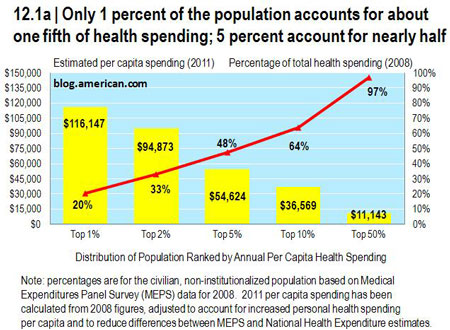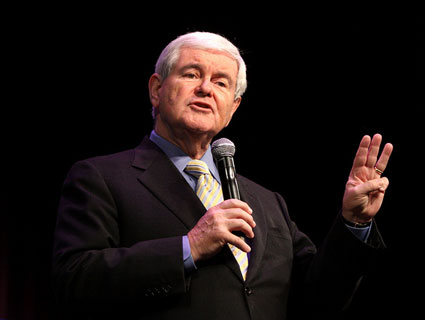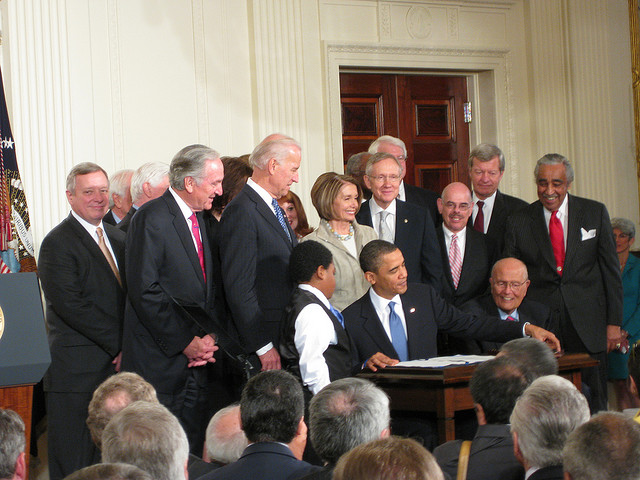Here’s a 1 percent no one wants to be part of: According to a recent analysis by Christopher Conover, a Duke University researcher on health policies and inequalities, barely 1 percent of the population accounts for nearly 20 percent of the nation’s already inflated health care spending. These few people each account for, on average, $115,000 in health care spending every year, which is almost three times the annual salary of the average American worker. Only 5 percent of the population accounts for fully 50 percent of all the nation’s health care spending. Everybody else generates, on average, about $360 a year in health care costs, or about 3 percent.
So it’s not hard to see where some of the problems lie in the health care system, which is the biggest driver of the country’s long-term deficit problems. Conover helpfully provides a chart from his forthcoming book, American Health Economy Illustrated:
 Health Care’s 1 Percent: Christopher J. ConoverGiven the small number of people driving the rapidly escalating health care costs in this country, it seems like solving the problem ought to be a snap, right? Clearly some people need to be spending a little more to make sure they don’t get sick down the road, and perhaps others ought to be getting a little less of the expensive and not necessarily useful stuff. Of course, if the problem were that simple, it would have been fixed by now. As GOP presidential contender Newt Gingrich said in 2005, “‘Health is about 30 times more difficult than national security.”
Health Care’s 1 Percent: Christopher J. ConoverGiven the small number of people driving the rapidly escalating health care costs in this country, it seems like solving the problem ought to be a snap, right? Clearly some people need to be spending a little more to make sure they don’t get sick down the road, and perhaps others ought to be getting a little less of the expensive and not necessarily useful stuff. Of course, if the problem were that simple, it would have been fixed by now. As GOP presidential contender Newt Gingrich said in 2005, “‘Health is about 30 times more difficult than national security.”















